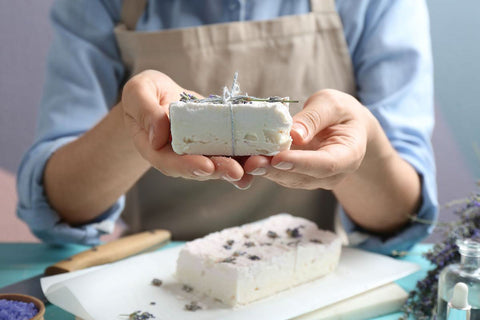Are you looking for a natural and gentle soap on your skin? Take a look at Bastille detergent! Bastille is a handcrafted soap that contains a lot of olive oil, making it mild, moisturizing, and ideal for all skin types, even sensitive skin. Making soap at home can also be a rewarding and enjoyable DIY endeavor.

You can make your own Bastille soap at home using the recipe provided in this blog article, which is straightforward and simple. You can make high-quality, handmade soap that you can use or present as a thoughtful, personalized gift to your loved ones using simple ingredients and tools. So let's begin your adventure of making your own soap!
Bastille Soap Benefits For Skin
A lot of olive oil and a few other oils, like coconut or avocado oil, are usually used to make Bastille, a mild and natural soap. Bastille soap contains a lot of olive oil, well-known for its moisturizing qualities. The skin may benefit from hydrating and nourishing, making it soft and smooth. Gentle cleansing: Even for delicate skin, Bastille soap provides a mild and gentle clean. The epidermis is cleansed without losing any of its natural oils.

The high percentage of olive oil in Bastille soap can help to settle and soothe irritated skin. It might be particularly helpful for those with eczema or other skin conditions. Olive oil is renowned for its anti-inflammatory qualities, which can help to lessen skin inflammation and redness. Olive oil's antioxidants can help shield the skin from free radical harm and possibly lessen the visibility of wrinkles and fine lines.
Castile Soap Vs. Bastille Soap: Which One Is Better?
The natural and gentle components used in Bastille and Castile soap are well known. There are, however, some significant variations between the two. While bastille soap is made from a combination of at least 70% olive oil and other oils like coconut or avocado oil, castile soap is made mainly from olive oil. Castile soap is renowned for being gentle and suitable for all skin kinds, even those with sensitive skin. It is a multi-purpose soap used for various tasks, including cleaning surfaces, washing utensils, and even washing hair.

Adding other oils makes Bastille soap comparable to Castile soap but has a slightly better cleansing ability. Although it may be a little more successful at removing dirt and grime, it is still gentle and appropriate for sensitive skin. The decision between Castile and Bastille soap ultimately comes down to your requirements and preferences. Castile soap might be the best option if you have extremely sensitive skin or are searching for a multi-purpose soap. Bastille soap might be a better choice if you search for a mild soap that cleans more thoroughly.
DIY Bastille Soap Recipe - Step By Step
Homemade Bastille soap can fulfill many utility purposes in your home. Here is a simple recipe to make Bastille soap at home:

Ingredients
- Virgin Olive Oil - 500g
- Virgin Coconut Oil - 200g
- Avocado Oil - 100g
- Distilled Water - 150g
- Sodium Hydroxide (Lye) - 70g
Equipment
Instructions:
Conclusion
To sum up, creating Bastille soap at home is a simple and satisfying DIY activity that may produce a mild and all-natural soap ideal for all skin types. You can produce high-quality soap free of harmful chemicals and additives with the proper materials and tools.
Making your own soap is a wonderful way to treat yourself, and it also makes a lovely and unique gift for loved ones. So why not give it a shot and start producing your handmade soap immediately? Your loved ones and your skin will both appreciate it! Visit us at VedaOils.com for all soap-making supplies at the most affordable price.
Frequently Asked Questions
Welcome to our comprehensive FAQ section on Bastille Soap Recipe!

Q. Can I use different oils in my Bastille soap recipe?
Ans. To make your own formula, experiment with various oils. Just be sure to figure out the appropriate ratios of lye to water for your particular oils.
Q. How long does it take for Bastille soap to cure?
Ans. It can take upto 4-6 weeks to properly cure Bastille soap. The lye will fully react with the oils during this period, hardening the soap and resulting in a milder, kinder soap.
Q. Can I add essential oils or other ingredients to my Bastille soap recipe?
Ans. Sure, you can add herbs, essential oils, or other components to your soap for aroma or additional benefits. But before adding these ingredients to your recipe, find the correct quantities and procedures.
Q. How do I store my Bastille soap?
Ans. Once fully cured, keep your soap in a cool, dry location. It is advised to use a soap dish with drainage so the soap can dry out between applications and avoid being overly soft.













 Sign in
Sign in Register now
Register now My Reward Points
My Reward Points









